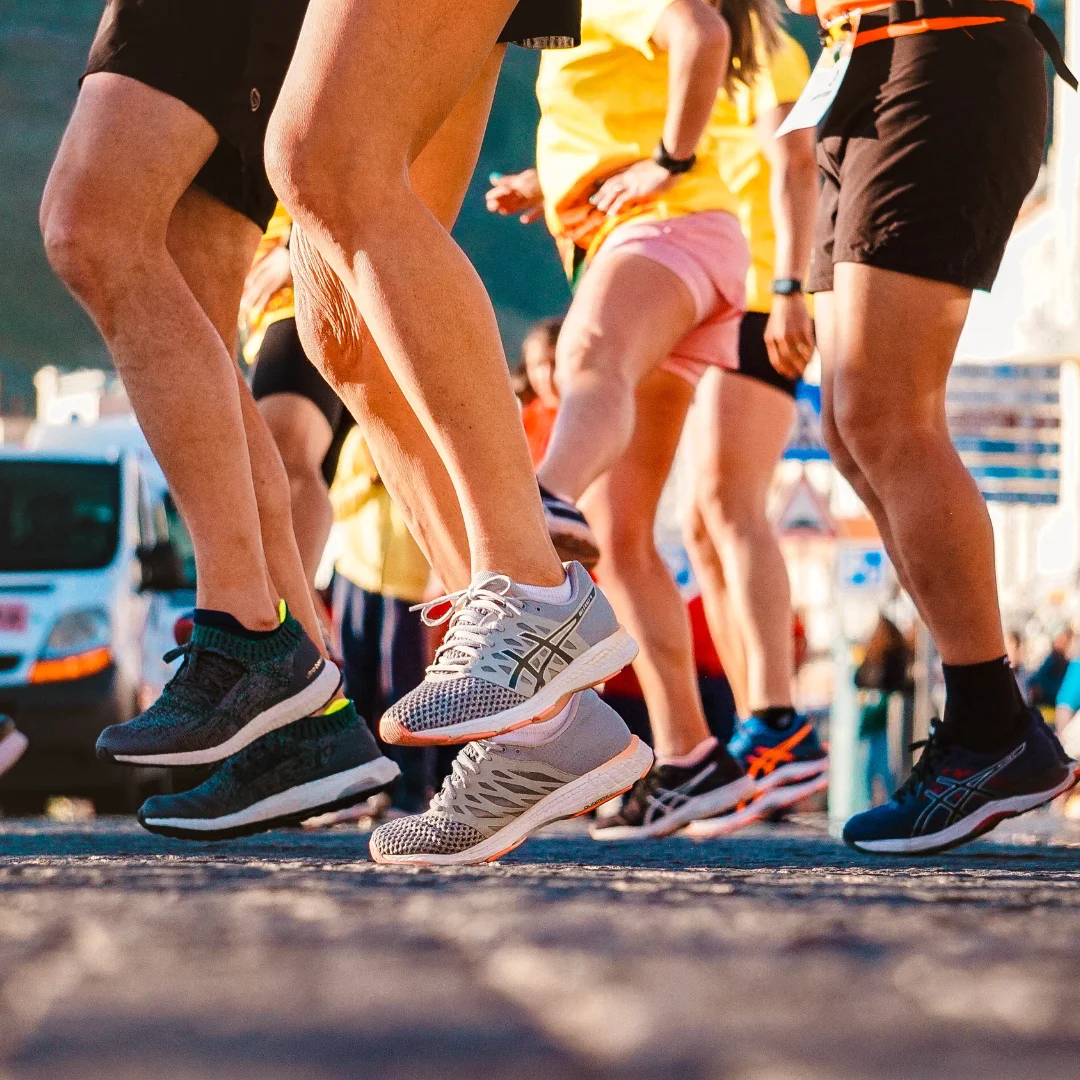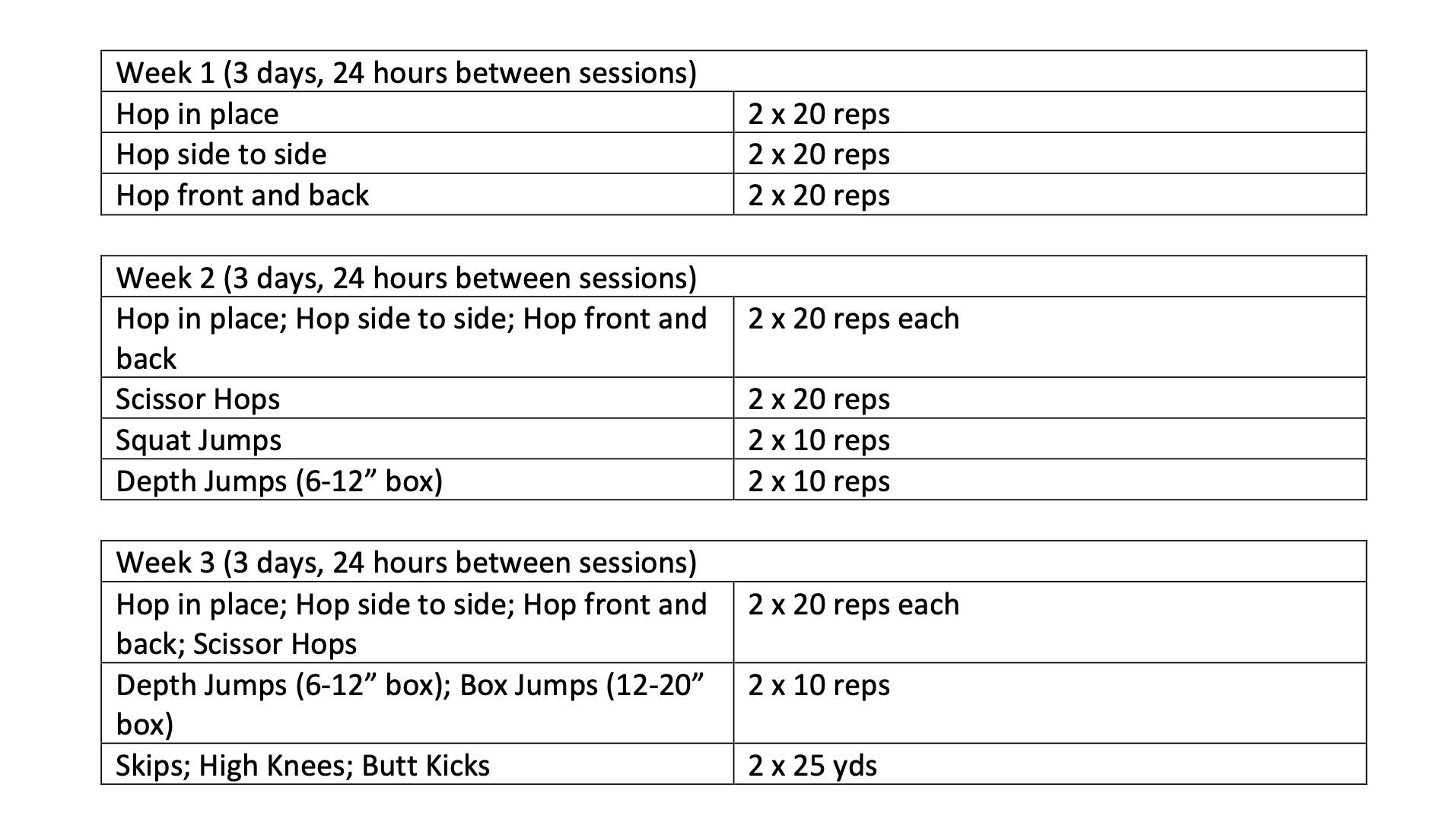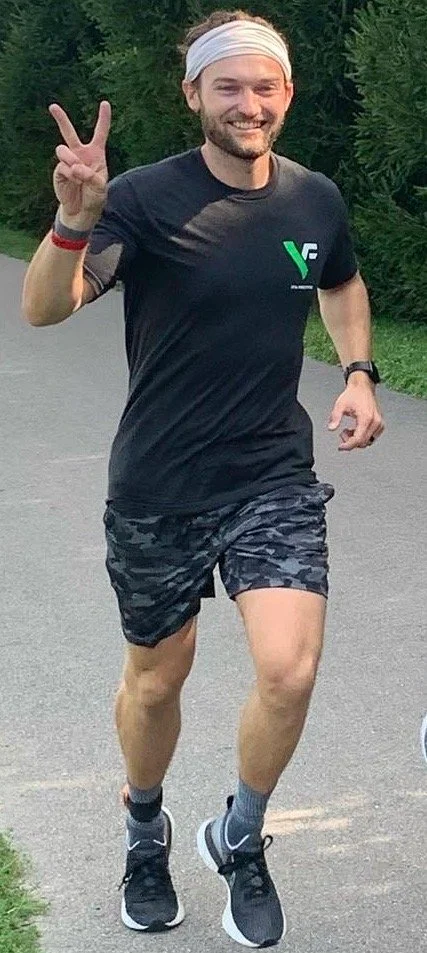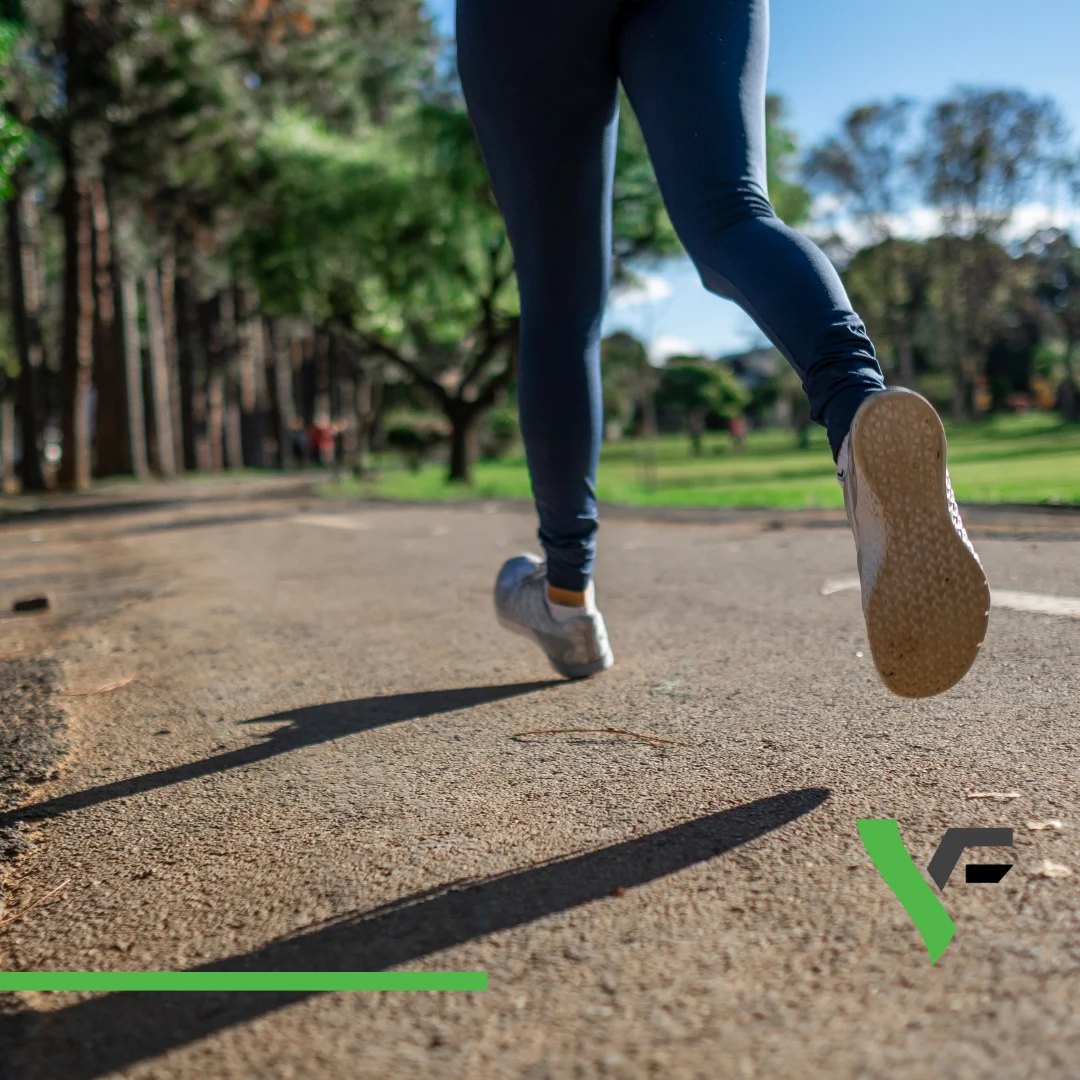It can be challenging to start a running program after extended time off, injuries, or if you’ve never been a runner in the first place. Our tendons, ligaments, muscles, and joints need to be gradually introduced to the new movement and volume of running. Follow along in this article to learn simple and effective ways to prevent injuries, improve performance, and accelerate your health all the way to the finish line.
Our tendons, which attach our muscles to bones, have an elastic component to them. This “elasticity” allows for athletes and active individuals to perform quick, repetitive movements during sport and fitness. In running, this can be easily seen when the achilles tendon stretches and shortens during foot contact and push off. This reflexive stretch-shortening cycle of the tendon-muscle creates force and propels the runner forward in an efficient manner (1). If this cycle is unaccustomed to these forces or weakened, injury and decreased performance can occur.
Plyometrics
Plyometrics are an exercise mode that creates maximal muscle force in a short amount of time (1). Training with plyometrics prior to running is an excellent way to introduce tendons, muscles, joints, and connective tissue to appropriate forces while managing volume. Often, individuals return to running too quickly, and do not allow these structures to adequately build in strength and capacity.

How to use plyometric training for return to running
Hops, jumps, bounds, box jumps, and more! These moves all address the stretch-shortening cycle of running. By implementing these techniques into a pre-running program, an individual’s body will be better prepared for the demands of running.
Below is a great example of how to implement plyometrics before the start of your running program.

It is important to listen to your body when initiating any new exercise program. Soreness is normal but pain is never the intended result. Rest days between sessions are vital for muscle, tendon, and soft tissue recovery. The more prepared your body is for movement the better it can perform!
Stay tuned for part 2 of our return to run series, where we will dive into how to increase your milage safely, effectively, and strategically when initiating your running program.

Physical Therapy for the Athlete in All of Us,
Dr. Bryan Vranic, PT, DPT, CSCS, CF-L1
This information is not intended to be used as medical advice but for educational purposes only. Please consult your Physical Therapist, Physician or Healthcare Provider for more information.
References:
1. Haff, Greg, Triplett, Travis. Essentials of Strength Training and Conditioning, Human Kinetics, 2016, pp. 472-477.


